Photos + Tutorial by Christie Sommers

You will need:
-cotton clothesline
-quilting needle (you can use a regular sewing needle with a thimble but a larger quilting needle is best for passing through the thick clothesline)
-embroidery thread, yarn, or string in color of your choice
-scissors
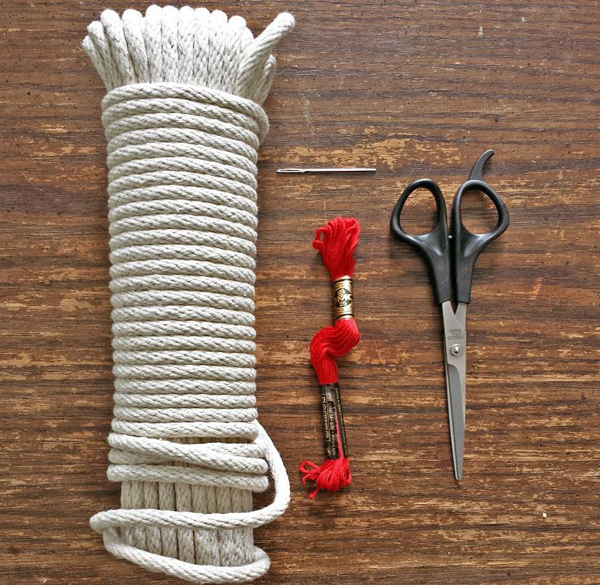
Thread the needle with colored string of choice and tie a knot at the end.
Use as much thread as you can manage. No more than 3′ should suffice. You can tie more thread on when you run out.
Start by coiling the clothesline between two fingers as shown.
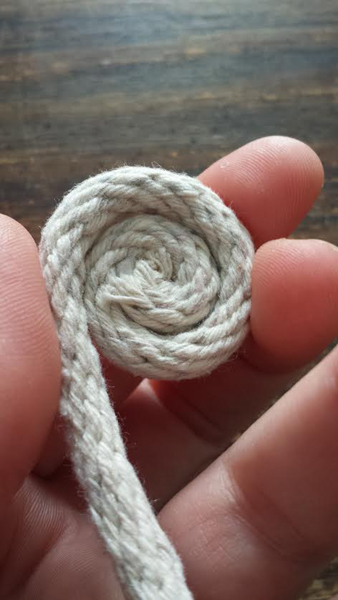
Insert the needle into the center of the coil passing through the layers of rope and exit as shown.
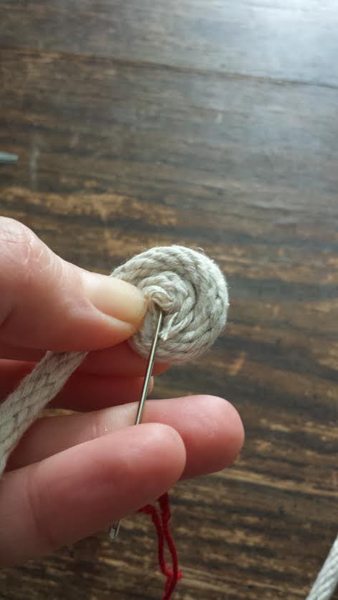
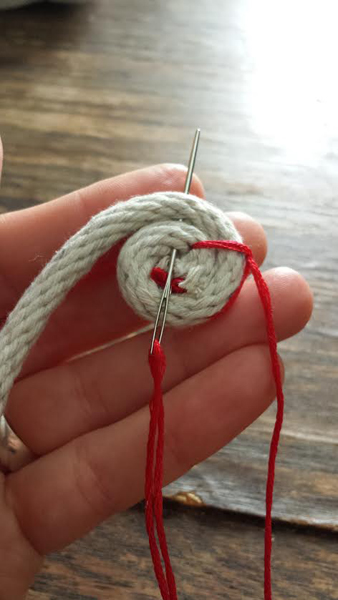
We will be using a blanket stitch for this project. Wrap your working thread behind the needle from right to left.
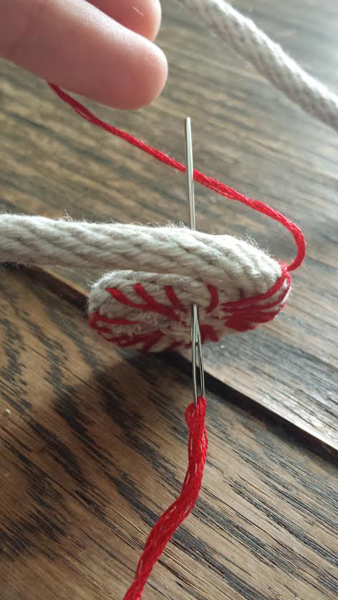
Bring the thread back over the needle from left to right and pull the needle through.

Repeat going around in a circle, entering in the center, until you reach the first stitch.
If you want a bowl with a wide flat base, you can continue the flat blanket stitch going around a few more times until the base is as wide as you like.
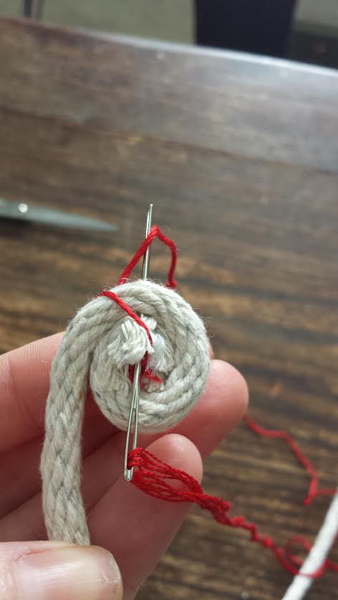
At this point you will be rounding up to give your bowl a curved shape.
To achieve this, you will be inserting the needle straight through the clothesline from front to back rather than from the center out. See pic.
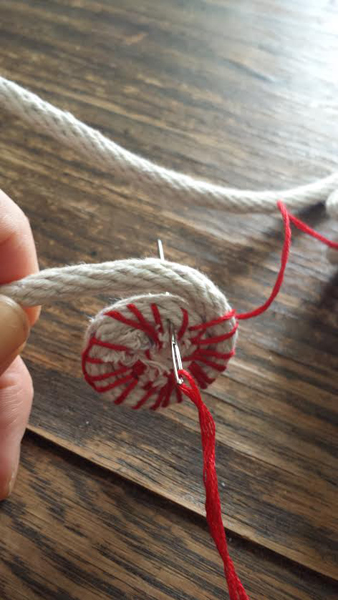
Continue with the blanket stitch inserting the needle through the clothesline from front to back until your bowl is as large as you like.
You will most likely run out of stitching thread as you are working. To add more, tie a new 3′ length of thread to the tail of the previous working thread. Place the ends together as shown and tie in a knot.
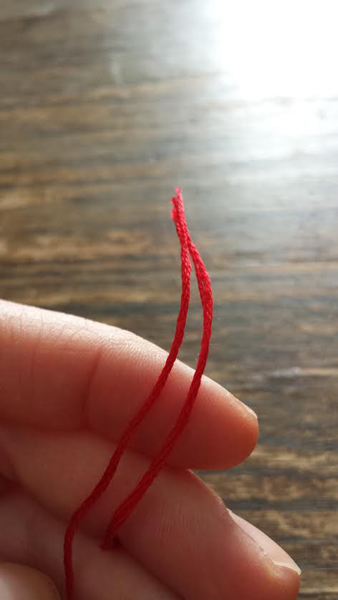
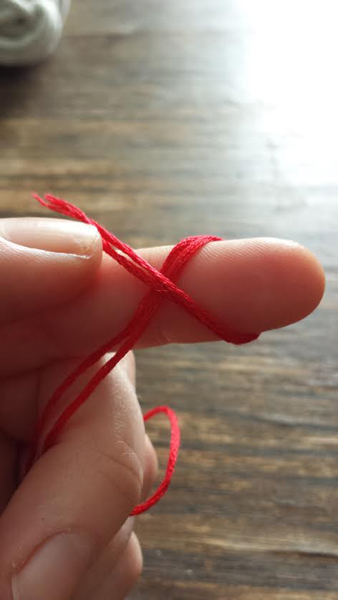
For the next few stitches, Insert the needle Between the coils instead of through the rope until your knot is hidden.
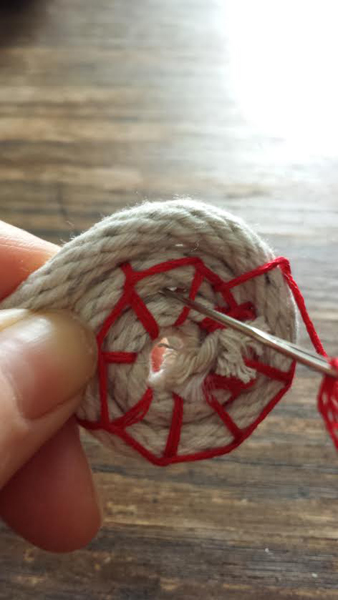
Once you pass the knot, continue stitching through the rope until you reach the desired bowl size.
Tie off your working thread and then snip the clothesline, You’re done!
As you can see from the next photo, the placement of your stitches will determine the design of your bowl. For the black bowl, I spaced my stitches out and staggered with each layer, essentially placing new stitches between the stitches on the previous level. For the red bowl, each new stitch was placed right next to the previous level’s stitch. Play around with stitch placement to see what you can come up with.
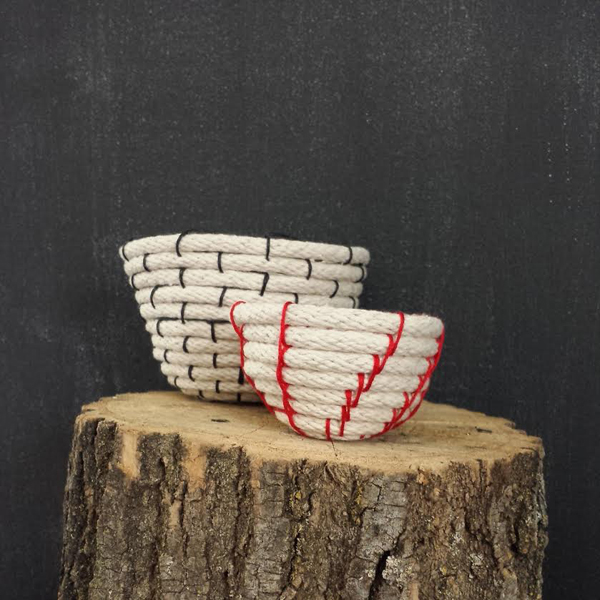
Enjoy!
—————————————————————————————————————
Christie Sommers is the designer and maker behind West Oak Design. She handcrafts small batch and one of a kind goods for home, women, and kids in her Wyndmoor, Pa studio.www.westoakdesign.com